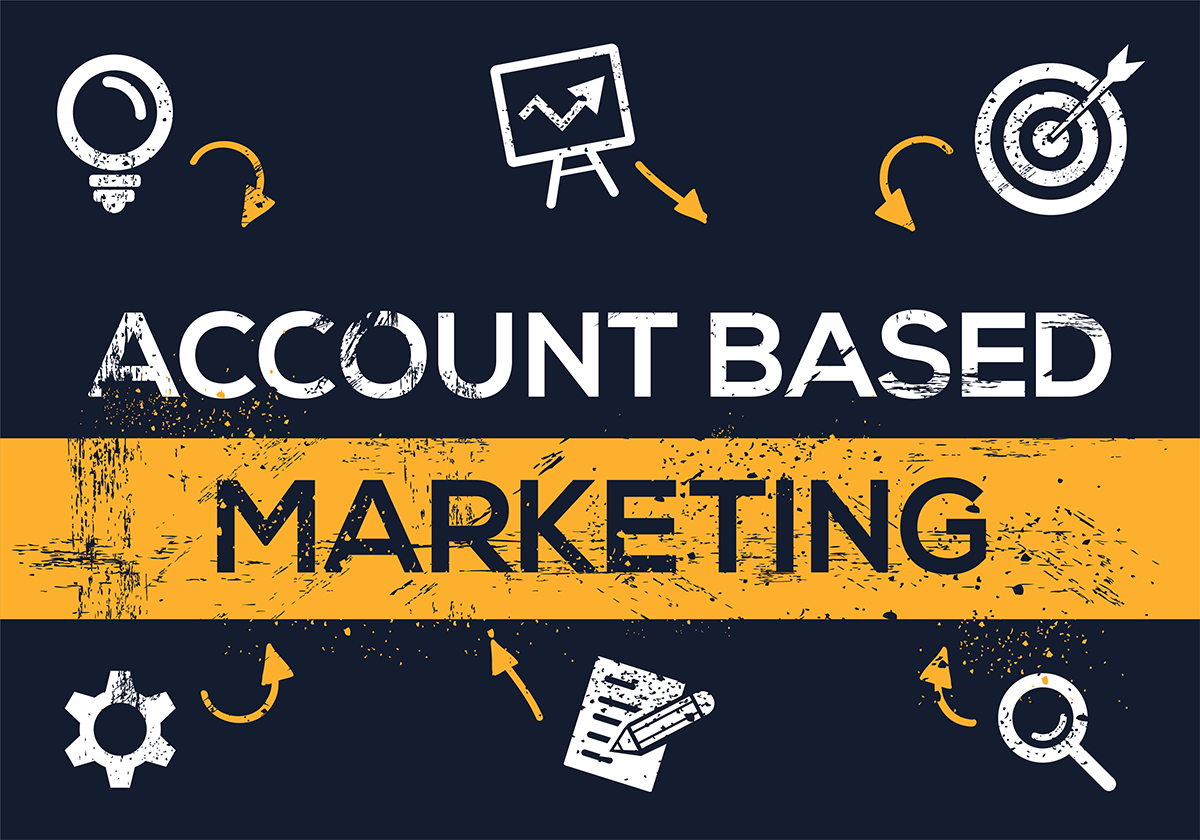Are you looking to take your marketing efforts to the next level? Look no further! In this comprehensive guide, we will dive into the world of Account-Based Marketing (ABM) and uncover the secrets to unlocking success.
ABM is a targeted marketing strategy that focuses on engaging and converting high-value accounts. It allows you to personalize your approach, tailoring your messages and content to specific companies or even individual decision-makers within those companies. By narrowing your focus and directing your efforts towards a select group of prospects, you can drastically improve your conversion rates and ROI.
In this guide, we will walk you through the key components of a successful ABM strategy, including identifying target accounts, creating personalized content, and implementing effective outreach tactics. We will also provide tips and insights from industry experts who have successfully implemented ABM campaigns.

Ready to take your marketing game to the next level? Let’s get started with unlocking success through Account-Based Marketing!
Understanding the benefits of account-based marketing
Account-based marketing (ABM) is a strategic approach that has been gaining significant traction in the marketing world. Unlike traditional marketing methods that focus on a broad target audience, ABM takes a laser-focused approach by identifying and targeting specific high-value accounts. This targeted approach offers numerous benefits that can have a profound impact on your business.
One of the primary advantages of ABM is the ability to personalize your marketing efforts. By focusing on a select group of accounts, you can tailor your messaging, content, and outreach to the unique needs and pain points of each target. This level of personalization not only helps to build stronger relationships with your prospects but also increases the likelihood of conversion and long-term customer loyalty.
Another key benefit of ABM is the improved efficiency and return on investment (ROI) it can provide. By directing your resources towards a smaller, more focused set of accounts, you can optimize your marketing spend and see a higher return on your investment. This is particularly beneficial for businesses with limited marketing budgets, as it allows them to maximize the impact of their efforts.
Moreover, ABM can help you to align your sales and marketing teams more effectively. By collaborating to identify and target the most valuable accounts, your sales and marketing teams can work together seamlessly to deliver a consistent and cohesive customer experience. This alignment can lead to improved communication, reduced friction, and ultimately, better results.

Finally, ABM can help you to build stronger, more meaningful relationships with your target accounts. By focusing on their specific needs and challenges, you can position your company as a trusted partner and strategic advisor, rather than just another vendor. This can lead to increased customer loyalty, repeat business, and valuable referrals.
Key elements of a successful account-based marketing strategy
Developing a successful account-based marketing strategy requires a well-thought-out approach that encompasses several key elements. Let’s dive into the critical components that will help you unlock the full potential of ABM.
The first and perhaps most crucial step is to clearly define your target accounts. This involves conducting thorough research and analysis to identify the companies that align best with your ideal customer profile. Consider factors such as industry, company size, revenue, and growth potential to narrow down your list of target accounts.
Once you have identified your target accounts, the next step is to deeply understand the key decision-makers within those organizations. This includes gathering insights into their pain points, challenges, and goals, as well as their personal preferences and communication styles. This level of personalization will be essential in crafting a compelling and tailored messaging strategy.
Another critical element of a successful ABM strategy is the creation of highly personalized and relevant content. This content should be designed to address the specific needs and challenges of your target accounts, positioning your company as a trusted partner and solution provider. This may involve creating custom case studies, whitepapers, or even personalized video messages.
Effective outreach and engagement are also essential components of a successful ABM strategy. This may include targeted email campaigns, personalized LinkedIn outreach, or even direct mail campaigns. The key is to utilize a multi-channel approach that ensures your message reaches your target accounts through the channels they prefer.

Finally, it’s crucial to continuously monitor and measure the success of your ABM campaigns. This involves tracking key metrics such as account engagement, pipeline growth, and revenue generated. By regularly analyzing your data and making adjustments to your strategy, you can optimize your ABM efforts and ensure that you’re achieving your desired outcomes.
Building your target account list
Identifying and targeting the right accounts is the foundation of a successful account-based marketing strategy. The process of building your target account list requires a strategic and data-driven approach to ensure you’re focusing your efforts on the most valuable prospects.
Begin by conducting a thorough analysis of your existing customer base. Look for patterns and commonalities among your most successful and profitable accounts. Consider factors such as industry, company size, revenue, and growth potential to identify the characteristics of your ideal customer profile.
Next, leverage external data sources and research tools to expand your target account list. This may include industry databases, online directories, and even social media platforms. By combining internal and external data, you can create a comprehensive list of accounts that align with your ideal customer profile.
When building your target account list, it’s essential to prioritize the accounts based on their potential value and fit with your business. This can be done by assigning scores or tiers to each account based on factors such as revenue potential, decision-maker influence, and strategic fit. This will help you focus your efforts on the accounts with the highest likelihood of conversion and long-term value.
It’s also important to regularly review and update your target account list. As your business evolves and the market landscape changes, your ideal customer profile may shift, and new high-value accounts may emerge. Continuously monitoring and refining your target account list will ensure that your ABM efforts remain relevant and effective.

Finally, consider involving your sales team in the process of building your target account list. Their insights and on-the-ground knowledge of your customers and prospects can be invaluable in identifying the most promising accounts and prioritizing your efforts accordingly.
Personalizing your messaging for account-based marketing
At the heart of a successful account-based marketing strategy lies the ability to personalize your messaging and content for each target account. By tailoring your approach to the unique needs and challenges of your prospects, you can create a more engaging and impactful experience that drives better results.
The first step in personalizing your messaging is to deeply understand your target accounts. This involves conducting thorough research to gather insights into their business, industry, pain points, and goals. Use this information to create buyer personas for each key decision-maker within your target accounts, allowing you to craft messages that resonate with their specific needs.
Once you have a clear understanding of your target accounts, it’s time to create personalized content that speaks directly to their challenges and interests. This may include customized case studies, whitepapers, or even personalized video messages that highlight how your solutions can address their unique pain points.
Another effective way to personalize your messaging is to leverage account-specific data and insights. This could include information about their current technology stack, recent news or events, or even details about their industry and competitive landscape. By incorporating this level of personalization, you can demonstrate your deep understanding of their business and position your company as a trusted partner.
It’s also important to consider the communication preferences and channels of your target accounts. Some decision-makers may prefer email, while others may be more responsive to LinkedIn outreach or even direct mail. By tailoring your outreach approach to the individual preferences of your prospects, you can increase the likelihood of engagement and conversion.

Finally, don’t forget to personalize your follow-up and nurturing efforts. Maintain a consistent and personalized dialogue with your target accounts, providing them with relevant updates, insights, and educational content. This will help to build trust, strengthen relationships, and keep your company top-of-mind as they navigate their buying journey.
Selecting the right channels for account-based marketing
Effective account-based marketing requires a strategic and integrated approach to channels and touchpoints. The key is to identify the communication channels that your target accounts prefer and leverage them to deliver a seamless and personalized experience.
One of the most powerful channels for account-based marketing is email. Personalized email campaigns can be highly effective in reaching and engaging your target accounts, especially when combined with detailed account intelligence and tailored messaging. Ensure that your email outreach is well-crafted, relevant, and aligned with your target accounts’ interests and pain points.
Another crucial channel for ABM is LinkedIn. As a professional social network, LinkedIn provides a valuable platform for connecting with key decision-makers within your target accounts. Leverage LinkedIn’s targeting and outreach capabilities to engage with your prospects, share relevant content, and build relationships.
Direct mail can also be a highly effective channel for account-based marketing. By sending personalized physical packages or direct mail pieces to your target accounts, you can cut through the digital noise and make a lasting impression. Consider including custom-branded materials, personalized notes, or even small gifts that align with your target accounts’ interests.
Event-based marketing can also be a powerful component of your ABM strategy. By hosting or sponsoring industry-specific events, you can create opportunities to connect with your target accounts in a more intimate and engaging setting. This can include virtual events, in-person conferences, or even exclusive webinars or workshops.
In addition to these traditional channels, consider incorporating digital advertising and account-based retargeting into your ABM strategy. By leveraging programmatic advertising and account-based retargeting, you can deliver highly targeted and personalized messages to your target accounts across various digital platforms, further reinforcing your brand and value proposition.

The key to success in selecting the right channels for account-based marketing is to take a holistic and integrated approach. By leveraging a diverse mix of channels and touchpoints, you can create a cohesive and personalized experience that resonates with your target accounts and drives meaningful engagement and conversions.
Measuring the success of your account-based marketing campaigns
Measuring the success of your account-based marketing (ABM) campaigns is essential for understanding the impact of your efforts and making informed decisions about your strategy going forward. By tracking the right metrics, you can gain valuable insights into the effectiveness of your campaigns and identify areas for improvement.
One of the primary metrics to focus on when measuring the success of your ABM campaigns is account engagement. This includes tracking the level of engagement and interaction your target accounts have with your content, outreach, and other marketing activities. Metrics such as email open rates, click-through rates, website visits, and social media engagement can provide valuable insights into the level of interest and responsiveness from your target accounts.
Another crucial metric to track is pipeline growth and velocity. By monitoring the number of target accounts that have entered your sales pipeline, as well as the speed at which they are progressing through the buying journey, you can assess the impact of your ABM efforts on your overall sales performance. This can help you identify which accounts are most responsive to your ABM strategies and where you may need to adjust your approach.
It’s also important to measure the revenue and return on investment (ROI) generated by your ABM campaigns. This includes tracking the revenue attributed to your ABM efforts, as well as the overall cost of implementing your ABM strategy. By calculating the ROI of your ABM initiatives, you can demonstrate the tangible business impact of your efforts and justify the ongoing investment in this strategic approach.
In addition to these core metrics, you may also want to consider tracking account-specific metrics, such as the number of new contacts or decision-makers engaged within a target account, the depth of relationships established, and the level of account expansion or upsell opportunities. These metrics can provide valuable insights into the long-term impact of your ABM efforts and help you identify the most valuable target accounts to focus on.

Finally, don’t forget to regularly review and analyze your ABM performance data. By continuously monitoring your metrics and making adjustments to your strategy based on the insights gained, you can optimize your ABM campaigns and ensure that you’re achieving your desired outcomes. This data-driven approach will be essential in driving the success of your account-based marketing efforts.
Tools and technologies for account-based marketing
Implementing a successful account-based marketing (ABM) strategy requires the right tools and technologies to support your efforts. From account identification and data enrichment to personalized outreach and campaign management, the right tools can make all the difference in the effectiveness of your ABM initiatives.
One of the foundational tools for ABM is a customer relationship management (CRM) system. A robust CRM platform can help you centralize and manage your target account data, including contact information, firmographic data, and engagement history. This can provide a holistic view of your target accounts and enable seamless collaboration between your sales and marketing teams.
Another essential tool for ABM is an account-based marketing platform. These specialized platforms offer a range of features to support your ABM efforts, such as account identification and prioritization, personalized content creation, multichannel campaign orchestration, and advanced analytics. By leveraging an ABM platform, you can streamline your workflows, improve targeting and personalization, and measure the impact of your campaigns.
Data enrichment tools are also crucial for ABM, as they can help you gather deeper insights into your target accounts. These tools can provide additional firmographic, technographic, and behavioral data to enhance your understanding of your target accounts and inform your personalization efforts. Popular data enrichment providers include ZoomInfo, Clearbit, and DiscoverOrg.
When it comes to outreach and engagement, email marketing platforms and sales engagement tools can be powerful allies in your ABM arsenal. These tools can help you craft personalized email campaigns, schedule and automate outreach, and track engagement metrics. Examples of such tools include Outreach, Salesloft, and Mailchimp.
Finally, consider incorporating social media and content management platforms into your ABM tech stack. Tools like LinkedIn Sales Navigator can help you identify and engage with key decision-makers within your target accounts, while content management systems like HubSpot or Marketo can enable the creation and distribution of personalized, account-specific content.

By leveraging the right tools and technologies, you can streamline your ABM processes, improve targeting and personalization, and gain valuable insights to drive the success of your account-based marketing efforts. Remember to continuously evaluate and optimize your tech stack to ensure it aligns with your evolving ABM strategy and business objectives.
Case studies: Real-world examples of successful account-based marketing campaigns
To better understand the power of account-based marketing (ABM) in action, let’s explore some real-world case studies of successful ABM campaigns:
Case Study 1: Salesforce
Salesforce, the leading customer relationship management (CRM) platform, implemented a highly targeted ABM strategy to engage with its key enterprise accounts. By leveraging detailed account intelligence and personalized outreach, Salesforce was able to identify and prioritize its most valuable prospects, resulting in a significant increase in pipeline generation and revenue growth. The company’s ABM efforts also helped to strengthen its relationships with existing customers, leading to increased retention and upsell opportunities.
Case Study 2: Marketo
Marketo, a leading marketing automation platform, took a strategic approach to ABM by focusing on a select group of high-value accounts. The company created personalized content and campaigns tailored to the specific needs and challenges of its target accounts, including custom videos, whitepapers, and event invitations. By aligning its sales and marketing teams and leveraging account-specific data, Marketo was able to achieve a 200% increase in pipeline generated from its ABM initiatives.
Case Study 3: IBM
IBM, the global technology and consulting giant, implemented a comprehensive ABM strategy to engage with its most valuable enterprise accounts. The company’s approach involved deep account research, personalized messaging, and a multi-channel outreach strategy that included targeted email campaigns, LinkedIn outreach, and custom event invitations. By adopting this focused approach, IBM was able to achieve a significant increase in account engagement, win rates, and overall revenue growth from its ABM-targeted accounts.
Case Study 4: Demandbase
Demandbase, a leading account-based marketing platform, utilized its own ABM capabilities to drive growth within its own business. The company identified and targeted a select group of high-potential accounts, creating personalized campaigns that leveraged a combination of digital advertising, content marketing, and sales outreach. As a result, Demandbase saw a 300% increase in pipeline generation and a 150% improvement in win rates for its ABM-targeted accounts.

These case studies demonstrate the transformative impact that account-based marketing can have on a business’s growth and customer relationships. By adopting a strategic and personalized approach to targeting and engaging with high-value accounts, these companies were able to achieve remarkable results in terms of pipeline generation, revenue growth, and customer loyalty.
Conclusion: Taking your account-based marketing to the next level
In today’s highly competitive business landscape, account-based marketing has emerged as a powerful strategy for driving sustainable growth and long-term success. By transitioning from a broad, one-size-fits-all approach to a more targeted and personalized marketing effort, you can unlock a world of opportunities and position your business for continued success.
Throughout this comprehensive guide, we’ve explored the key elements of a successful ABM strategy, from building your target account list and personalizing your messaging to selecting the right channels and measuring the impact of your campaigns. We’ve also delved into the tools and technologies that can support your ABM efforts, as well as real-world examples of companies that have achieved remarkable results through their account-based marketing initiatives.
As you move forward with your own ABM journey, remember that the key to success lies in your ability to continuously adapt and evolve your strategy. Stay attuned to the changing needs and preferences of your target accounts, experiment with new tactics and channels, and leverage data-driven insights to optimize your approach.
By embracing the power of account-based marketing and taking a strategic, personalized approach to engaging with your most valuable accounts, you can drive meaningful growth, deepen customer relationships, and ultimately, achieve long-term, sustainable success for your business.
So, what are you waiting for? It’s time to unlock the full potential of account-based marketing and take your marketing efforts to the next level.




